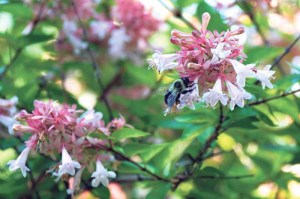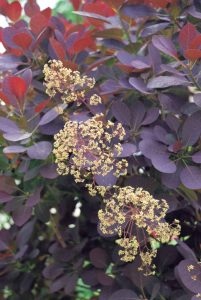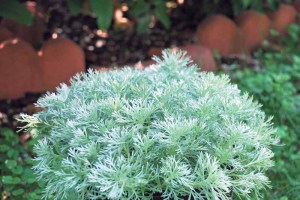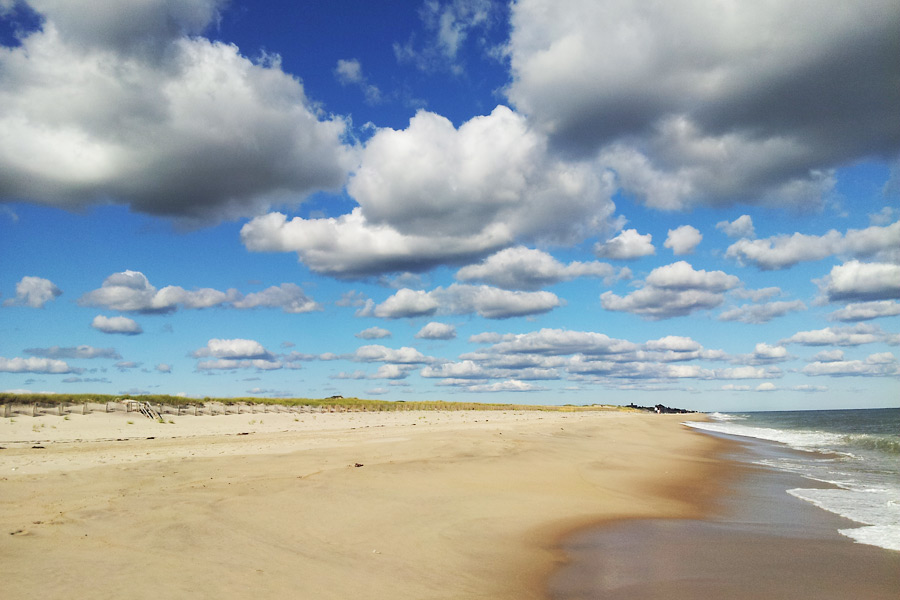
(Photos by Josephine Borut)
After Long Island’s 2016 summer of hot, dry weather, I started considering how to make my garden more drought tolerant. I have lost a shrub or two and some of my more tender perennials to our extreme weather, so researching choices for our Zone 7a area was the place to start. Any new plants would need to be both drought and cold tolerant up to five-feet because of changing winter weather. I decided to start with small trees and shrubs. To begin, I needed to find a variety of plants that could be visually eased into my garden to create a cohesive look. The selections below offer some of what I was seeking. You might also consider some of these worthy to be added to your garden.
The needle palm, Rhapidophyllum hystrix, is a hardy evergreen that can grow to 6-feet tall and will form clumps of fan-shaped leaves in sun or part shade. The dark green and silver backed foliage can create interesting light and dark patterns. The plant does however do best in acid soil so a soil test would produce the most positive results.
A tree that impressed me during my research is the Hop tree, Ptelea trifoliata. It is a small native tree with a vase-shape that grows 15-20-feet tall. It has clusters of tiny, fragrant, green flowers in the summer which attract bees and swallowtail butterfly caterpillars. This deciduous tree can be grown in sun or shade and in the fall the leaves turn a bright yellow adding interest to the autumn border.

A 4-foot tall shrub with white flowers that attracts bees, butterflies and hummingbirds is the glossy Abelia, Abelia x grandiflora. This evergreen will do fine in full sun and its glossy leaves will light up the border in the winter when they turn a lovely shade of bronze.
A shrub that I recommend because I already have it in my garden is Cotinus coggygria var, Royal Purple. It is a Smokebush, which can grow 20-feet tall in full sun with stunning red-burgundy foliage. Its foliage is highlighted in the summer by smoke like panicles of tiny rosy flowers which attract bees. If it suffers dieback in our harsh winters, it will respond well with rigorous new growth when pruned back harshly in early spring. In my garden, it has survived well despite the weather these past few summers and winters.
A low growing evergreen sub-shrub that will add punctuation in the border is Wormwood, Artemisia Power Castle. Its dense growth of feathery, silver-felted leaves is very tolerant of heat and humidity. This non-flowering hybrid is longer lived than other Artemisia and can be sheared to keep it a dense, rounded, sun loving plant. Cutting it back each fall has been very successful in my sunny border.
Flowering quinces are heirloom shrubs also in my garden. They produce early flowers then fall fruit in the perennial border. Chaenomeles japonica and Chaenomeles speciosa can grow from 2-foot to 10-foot in full sun depending on the variety. Bees love to visit these shrubs. No matter what the weather, they bounce back to provide a wonderful show.

A low growing, deciduous shrub with small, dark leaves that turn red in the fall is Cotoneaster horizontalis. This shrub grows from 1-3-feet and has tiny white or pink flowers that result in red, round berries in the fall. It will tolerate wet winters and dry summers when planted in full sun or part shade. What more can a gardener ask?
Enjoy your blooming gardens and consider adding drought tolerant plants to your garden this spring, especially a few that support our pollinators.
Josephine Borut is a current member of The American Horticultural Society,. The Long Island Horticultural Society will meet on Sunday in the Hay Barn at Planting Fields Arboretum in Oyster Bay at 1 p.m. The next meeting is March 26. Landscape architect CeCe Haydock is the speaker. For more information, go to www.lihort.org.































